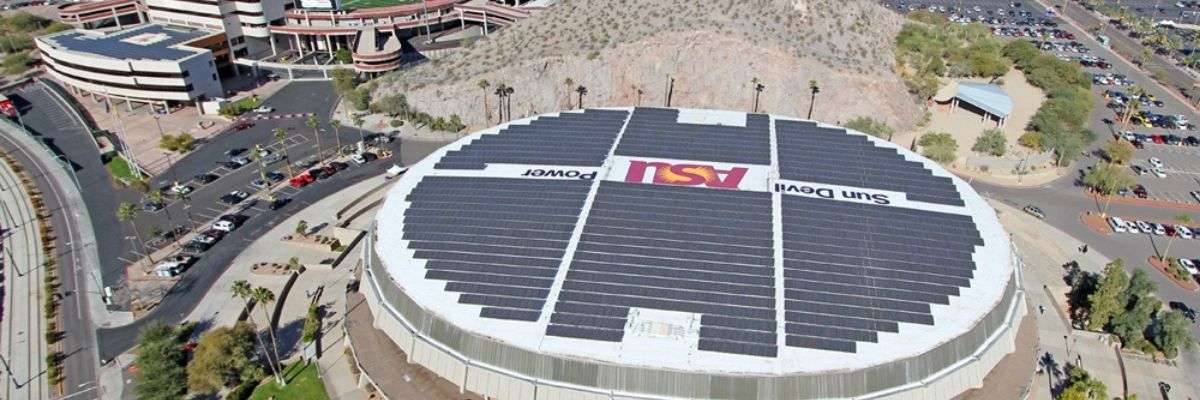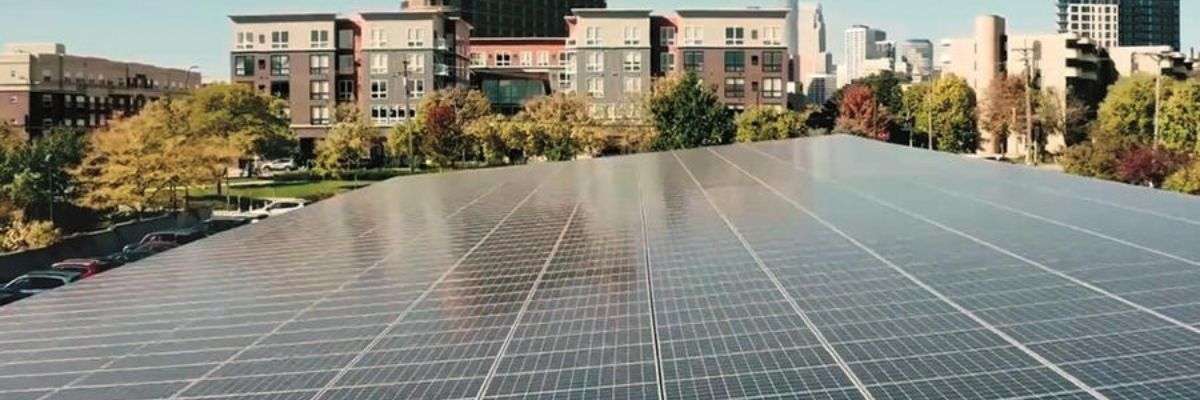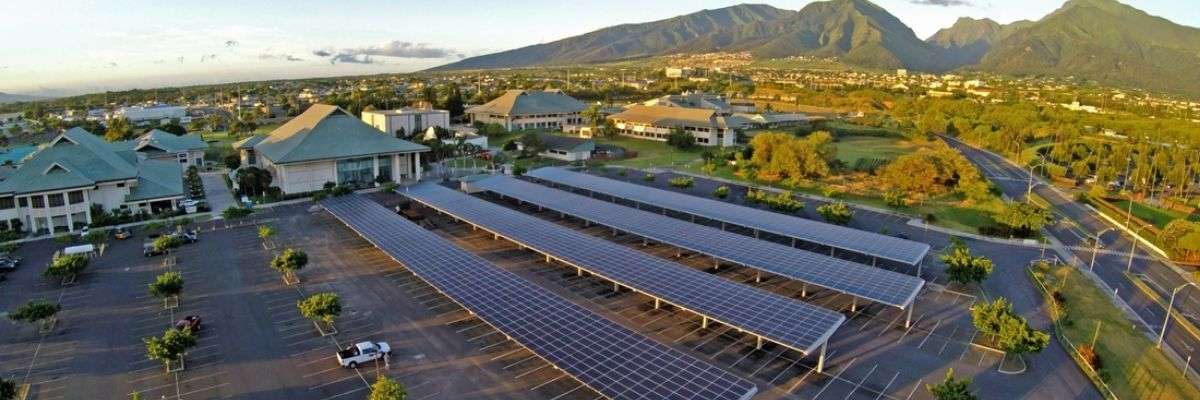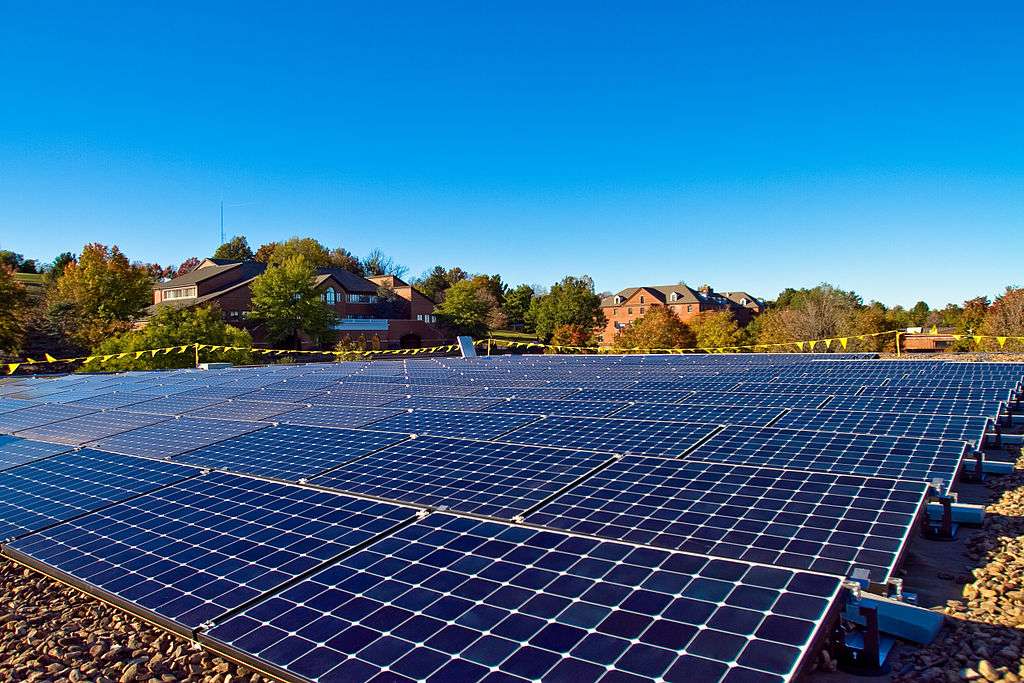Educational institutions across the United States are embracing renewable energy as we move towards a decarbonized future. Colleges and universities throughout the country are leading by example when it comes to adopting renewable energy sources, with more than 40 educational institutions in the U.S. now sourcing 100 percent of their energy from renewables. Of course, many of these colleges and universities are using solar panels to meet their clean energy goals. With this in mind, we’re going to take a look at the top 10 solar universities in 2022 and find out how they compare.
Top 10 Solar Universities in 2022
Below are the top 10 solar universities in the United States in 2022, with a little information on how each institution is embracing solar energy in the pursuit of 100 percent renewable energy consumption.
#1. Arizona State University - Arizona
Thanks to the deployment of 90 solar installations across 4 campuses, Arizona State University reached its goal of zero greenhouse gas emissions back in 2019—6 years ahead of schedule. The on-site solar systems deployed by ASU include photovoltaic solar panels, solar collectors, solar shaded parking spaces, and solar shaded stadium seats. These solar systems generate a combined 24.1 MW of electricity, providing 50 percent of the university’s peak daytime electricity requirements. Across a year, this helps ASU avoid CO2 emissions equivalent to those of 4,804 passenger vehicles. The university also works in partnership with Arizona Public Service utility company to maintain off-site solar systems which generate an additional 28.8 MW of solar capacity.
Arizona State University#2. Stanford University - California
As part of its plan to reach 100 percent renewable energy consumption by the end of 2022, Stanford has deployed both on-site and off-site solar installations, achieving 82 percent solar-powered electricity already. Stanford’s on-site PV systems generate 4.9 MW of energy, while an operational off-site solar farm and a second in development will bring total off-site capacity to 130 MW—more than enough to cover the university’s energy requirements. Stanford does not draw electricity directly from the currently operational off-site solar farm, but rather sends the generated energy to the California grid and then withdraws grid electricity equivalent to the energy output of the solar farm.
#3. Rutgers University - New Jersey
Rutgers University is implementing solar solutions to help meet its target of zero carbon emissions from purchased electricity by 2030. A 32-acre solar canopy on a parking lot is one of the largest installations of its kind on a U.S. campus, generating 8.8 MW of electricity and providing enough power for 60 percent of the energy needs of the Rutgers Livingston campus. This 32-acre solar canopy is estimated to save Rutgers $28 million over 20 years thanks to a reduced electricity bill and the sale of Solar Renewable Energy Credits (SRECs). As well as the parking lot canopy, a 7,993-panel solar farm provides an additional 10 percent of the campus’s energy needs. The 7-acre solar farm produces 1.4 MW of solar power, reducing the university’s CO2 emissions 1,300 tons on an annual basis.
#4. University of Arizona - Arizona
The second Arizona-based university to feature on this list, the University of Arizona in Tucson has also been embracing solar energy on campus. Working alongside Tucson Electric Power (TEP), the University of Arizona runs a Solar Zone which serves as a hub for testing, evaluating, and demonstrating solar energy technologies. This Solar Zone also generates 25 MW of electricity. Additionally, the university houses an agrivoltaic project on a campus rooftop. This agrivoltaic project consists of 288 solar panels which operate in conjunction with agricultural production to provide 15 percent of the building’s electricity. The combination of solar panels and agriculture is mutually beneficial as the plants cool down the panels, making them more efficient, while the panels cover the plants, preventing excessive sun exposure.
#5. University of Minnesota, Twin Cities - Minnesota
With a goal of carbon neutrality by 2050, the University of Minnesota has invested significantly in solar infrastructure, allowing the UM Twin Cities campus to reduce its greenhouse gas emissions by 50 percent over the last 13 years. 9 on-campus solar gardens provide 60 percent of the energy needs of UM Twin Cities. On-site solar installations located at the university include 510 rooftop-mounted modules, 630 carport modules, and a ground-mounted solar field of 864 modules. Moving forward, UM has committed to withdrawing all fossil fuel-related investments within 5 to 7 years. UM also houses a Solar Energy Laboratory specializing in applied research of solar fuels, thermal storage, solar heating, and advanced heat exchangers.
University of Minnesota, Twin Cities#6. Butte College - California
From 2005 to 2011, Butte College installed 25,000 solar panels. These panels now produce 4.55 MW of electricity, providing enough energy to cover the entire college’s needs. This solar deployment contributed significantly to Butte College becoming the first grid-positive (producing more energy than is consumed) college in the U.S. in 2011. The solar panels, which are installed on rooftops, on the ground, over parking lots and covered walkways, are expected to reduce annual CO2 emissions by 6.9 million pounds, while also saving the college $100 million over a 30-year period.
#7. Hobart and William Smith Colleges - New York
Hobart and William Smith, located in upstate New York have seen significant progress on the clean energy front since 2007, reducing their carbon emissions by over 6,000 metric tons. The colleges have used carbon-free electricity since 2011, becoming energy positive in 2019 and sourcing 125 percent of their energy needs from renewables. 50 percent of this power comes from 2 nearby solar farms which are made up of 16,000 solar panels spread across 10 acres. The solar farms, which have an output of 5 MW, have generated 26 GWh of clean energy so far. Wind and hydropower provide enough energy to meet the other 50 percent of the colleges’ electricity requirements.
#8. University of Hawai’i, Maui - Hawaii
The University of Hawai’i has taken huge strides in terms of carbon neutrality, making significant progress towards its goal of net-zero energy consumption across all 10 campuses by 2035. UH Maui is leading the way, having achieved this goal already by reducing fossil fuel consumption 100 percent and drawing 100 percent of its energy from on-site solar PV and battery storage. The campus hosts over 3,300 PV modules on rooftops, ground mounts, and carports for a combined capacity of 2.85 MW. UH Maui’s on-site battery storage capacity totals 13.93 MWh. 
University of Hawai’i, Maui#9. Princeton University - New Jersey
Princeton is on its way to reaching a 2046 carbon neutrality target, having reduced greenhouse gas emissions by 11 percent since 2008 with the help of on-campus solar installations. The university first installed solar in 2012 and has 8 new solar arrays in development, to be situated on fields, rooftops, and parking lots. Notably, the panels installed on fields will be capable of collecting energy on both sides of the solar cells for increased efficiency. Once these new arrays are completed, Princeton will have increased the number of panels on campus from 16,528 to 43,852, bringing its solar consumption from 5 percent to 19 percent of total electricity use.
#10. University at Buffalo - New York
Two on-site solar installations at the University of Buffalo generate over 400,000 kWh, contributing to UB’s 35 percent reduction in carbon emissions and the impressive achievement of 100 percent renewable energy consumption. The campus is also home to the Solar Strand Walkway, an installation consisting of 3,200 solar panels which powers hundreds of student apartments and helps the university to avoid 400 tons of greenhouse gas emissions annually. The University at Buffalo also has a 25-year agreement with BQ Energy to receive energy from a nearby solar farm. The excess energy generated by both on-site and off-site installations goes towards helping the local community to increase green energy consumption.
Are you a college or university representative interested in installing solar panels? Reach out to YSG Solar today. YSG has been working in the solar industry for over a decade, developing everything from residential solar systems to large-scale solar farm projects. We will identify the ideal solar project for your college or university and make that project a reality. Call the office at 212.389.9215 or send us an email to learn more about the benefits of solar for educational institutions.
YSG Solar is a project development company responsible for commoditizing energy infrastructure projects. We work with long-term owners and operators to provide clean energy assets with stable, predictable cash flows. YSG's market focus is distributed generation and utility-scale projects located within North America.
Sources:
https://inxeption.com/resources/article/10-universities-building-a-brighter-future-with-solar-energy
Featured Photo from Dyoder, CC BY-SA 3.0 <https://creativecommons.org/licenses/by-sa/3.0>, via Wikimedia Commons

